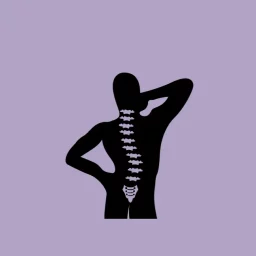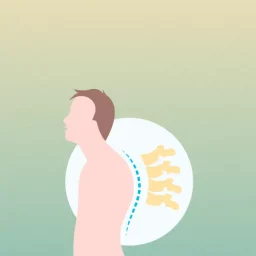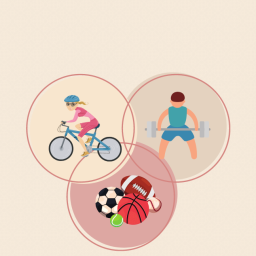Summer is in full swing, and many Canadians are planning road trips to explore the country. While road trips can be a great way to see new places and make memories, they can also be tough on your back. Sitting in one position for long periods can lead to back pain, neck pain, and discomfort in your extremities.
In this post, we will discuss some tips on how to avoid back pain when driving long distances. We will cover topics such as proper ergonomics, stretching, and taking breaks. By following these tips, you can help to ensure that your next road trip is a comfortable and enjoyable one.
Proper road trip Ergonomics
The first step to avoiding back pain when driving is to make sure that your car is set up properly. This means adjusting your seat, mirrors, and steering wheel so that you are in a comfortable and relaxed position.
Here are some tips for proper ergonomics:
- Adjust your seat so that your feet can reach the pedals comfortably without your knees being bent too much.
- Adjust the height of your seat so that you can see over the steering wheel without having to hunch your shoulders.
- Adjust the angle of your seat back so that you are sitting in a slightly reclined position. This will help to reduce the strain on your spine.
- Adjust your mirrors so that you can see all of your surroundings without having to turn your head too much.
- Adjust the steering wheel so that it is at a comfortable height and angle. If you can’t reach your steering wheel comfortably, consider using a pillow on your lap to rest your arms while driving.
- Ensure your pelvis is aligned by keeping your legs at similar angles. Avoid extending your right leg to reach the pedals while having your left knee flexed and your foot on the floor. Use the dead pedal to rest your left foot, or keep both feet on the floor with your knees slightly flexed while using cruise control.
Road trip Stretching
In addition to adjusting your car, stretching regularly while driving is important. Stretching helps to keep your muscles loose and prevents them from getting tight.
Here are some stretches that you can do while driving:
- Neck stretch: Gently tilt your head to the right, then to the left. Repeat 10 times.
- Shoulder stretch: Bring your right arm across your chest and hold it with your left hand. Gently pull your right arm towards your chest. Hold for 10 seconds. Repeat with the left arm.
- Back stretch: Reach your arms overhead and clasp your hands together. Gently lean back until you feel a stretch in your lower back. Hold for 10 seconds.
Taking Breaks
Finally, it is important to take breaks from driving every 2-3 hours. This will give you a chance to get out of the car, stretch, and walk around.
When you take a break, be sure to stand up straight and walk around for a few minutes. This will help to get your blood flowing and prevent your muscles from getting tight.
Additional Tips
- If you have a long road trip ahead of you, consider packing a small pillow or rolled-up towel to support your lower back.
- Change positions frequently. Don’t sit in the same position for too long. Every 20-30 minutes, take a few seconds to shift your weight, roll your shoulders, and stretch your neck and back.
- Adjust the temperature. If you’re too hot or too cold, your muscles will tense up, which can lead to pain. Adjust the air conditioning or heater to keep yourself comfortable.
- Listen to music or audiobooks. This can help to keep you relaxed and focused on something other than the road.
- Avoid caffeine and stay hydrated. Caffeine can dehydrate you and make you more likely to experience back pain. Staying hydrated helps prevent muscle cramps.
Lastly, make sure to keep on top of your wellness appointments over the summer. Do not neglect your musculoskeletal health just because you’re on vacation – enjoying good health shouldn’t take a break! Make sure to visit your chiropractor, physiotherapist, or massage therapist before a long drive, and make sure you’re in tip-top shape to enjoy your time off.
Proper ergonomics, stretching, and taking breaks are all important factors in preventing back pain. By following these tips, you can help avoid back pain and ensure that your next road trip is a comfortable and enjoyable one.
















[…] Properly adjusting the height of your car headrest will help prevent whiplash injury in an accident. In the ideal headrest adjustment, the top of your head should be in line with the top of the headrest and there should be no more than 2 to 5 cm between the back of your head and the headrest. Remember to adjust your headrest before your next road trip! […]
[…] social media, chances are we usually sit. Canadians also spend large amounts of time sitting while commuting in their cars and on public […]
[…] laptops, tablets and phones typically causes our heads to lean forward. On top of that, when we drive or sit at a desk, we reach ahead, causing even more rounding of our shoulders and upper back. Our […]